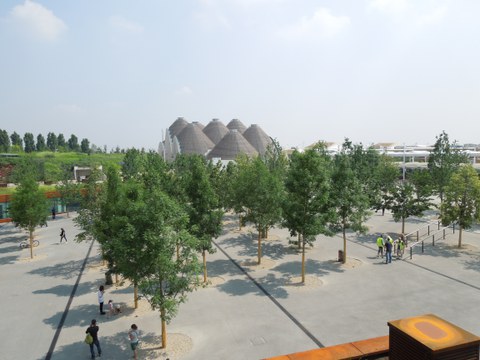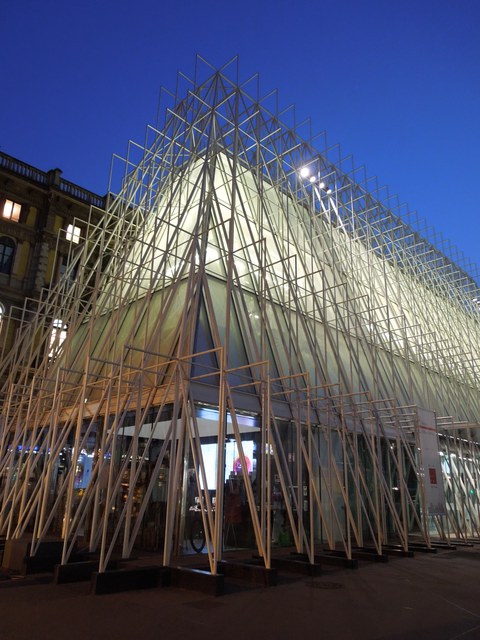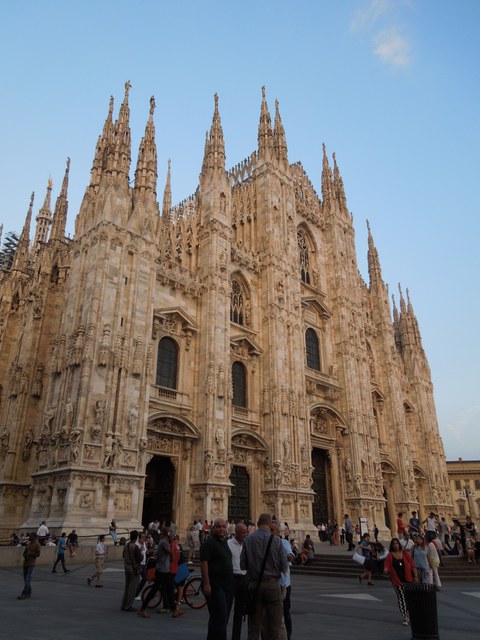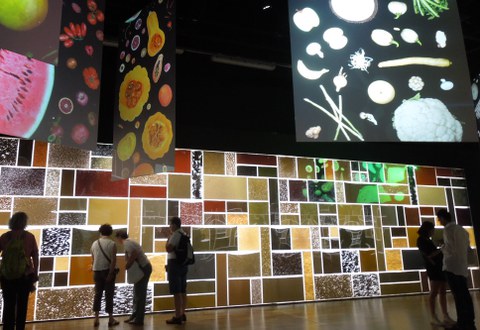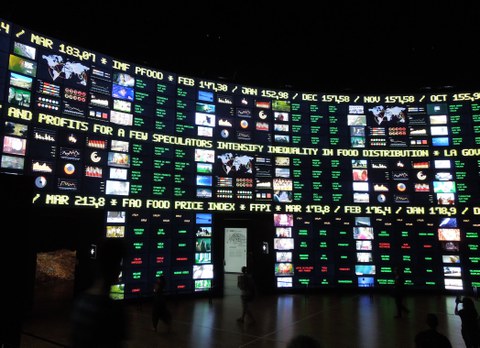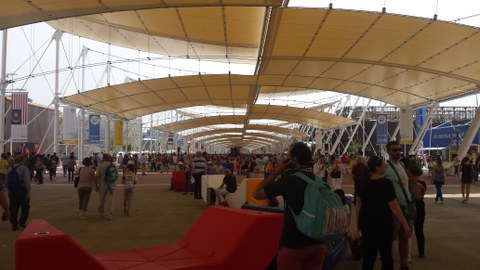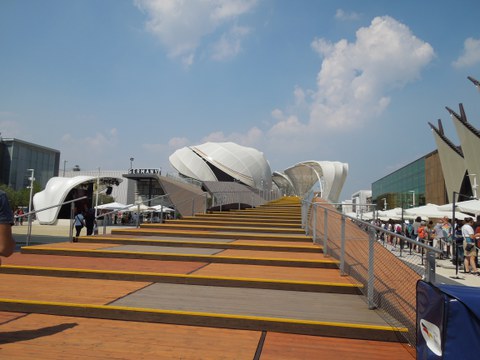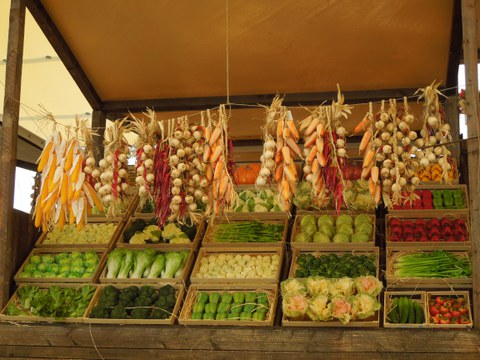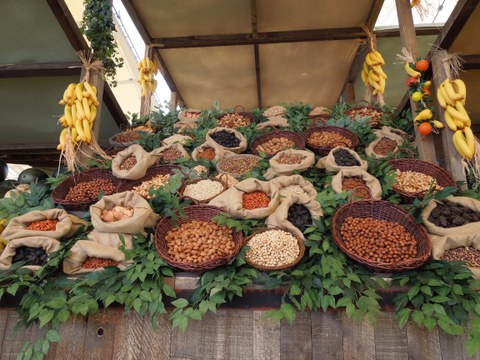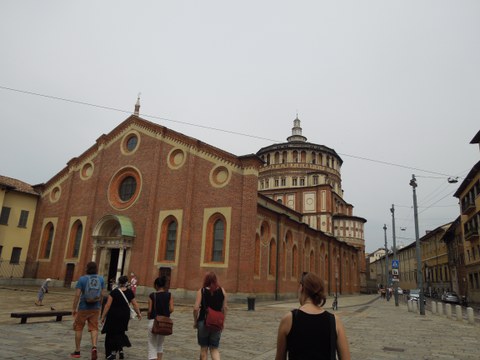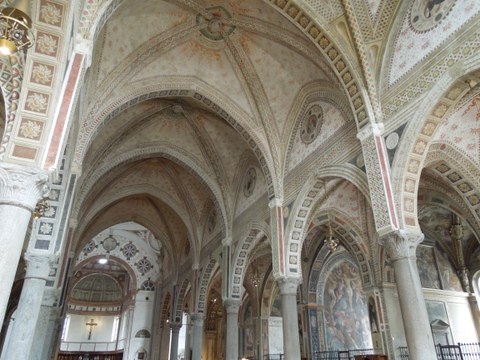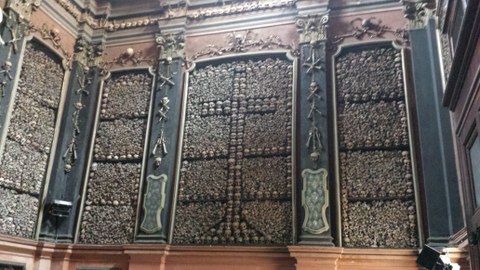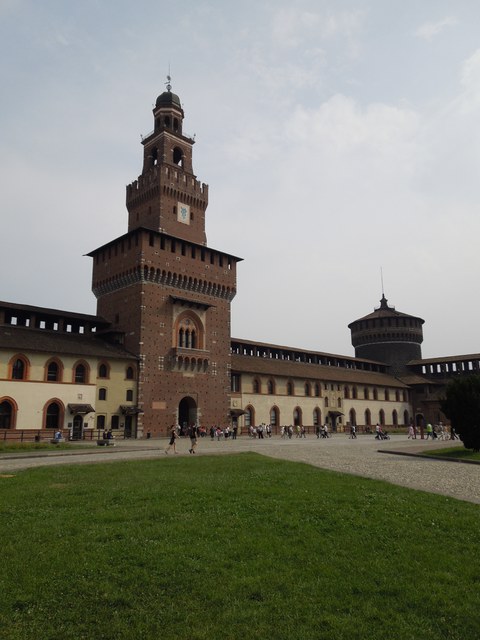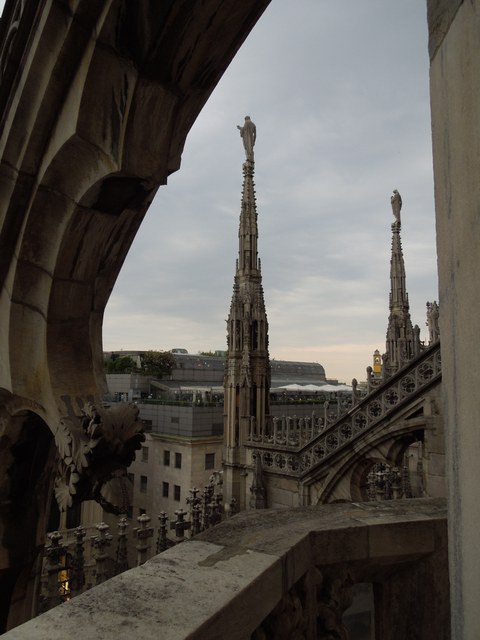Excursion to Milan 2015
"Milan & EXPO 2015"
As part of the Italian Studies course at the TUD Dresden University of Technology's Institute of Romance Studies, nine students were given the opportunity to visit EXPO 2015 and the city of Milan in summer 2015. The excursion of the department "Italian Literature and Cultural Studies" under the direction of Prof. Dr. Elisabeth Tiller took place from June 10 to June 14, 2015. The program included not only a visit to this year's EXPO, but also a tour of numerous museums.
Wednesday, June 10
Early in the morning, our excursion group set off on the journey from Dresden to Milan. After a stopover in Zurich, we arrived there in the early afternoon.
After arriving in Milan and allocating rooms at the hotel, the whole group drove into the city center, where we were able to gain our first impressions. The whole of Milan seemed to be in the mood for the Expo: right in the center of the city, in front of the Castello Sforzesco, we were greeted by the so-called EXPO Gate, which, with its glass façade and pyramid-like steel scaffolding construction, offered a first taste of the World Expo on the outskirts of the city. There was no sign of the allegations of corruption, mafia scandals or even violence that had taken place on the opening day of the EXPO[1].
Instead, we were able to round off the first evening with a typical Italian dinner in Milan's city center.
Thursday, June 11
The motto of Expo 2015 in Milan was "Nutrire il pianeta - energia per la vita" (Nourish the planet - energy for life). Five areas on the EXPO site were thematically aligned with the motto, such as the "Padiglione Zero", "Future Food District", "Parco della Diversità", "Arts and Foods" and "Children Park".
These complexes served to illustrate how technologies can be used to achieve a balance between availability and resource consumption.
The approximately one million square meter EXPO exhibition site is located in the northwest of the city and was extensively reconstructed for the World Expo. EXPO 2015 is the second world exhibition to be held in the capital of Lombardy. A world exhibition on the subject of transportation was held here back in 1906.
A total of 145 countries and some internationally active organizations were represented at the EXPO, 93 countries exhibited in their own pavilions, while smaller countries that could not afford to finance their own large pavilion were grouped together in so-called clusters. The thematic focuses were: Riso, Cacao e Cioccolato, Caffè, Frutta e Legumi, Spezie, Cereali e Tuberi, Bio-Mediterraneo, Isole Mare e Cibo and Zone Aride.[2]
At 10 a.m., our excursion group set off for the Expo site, the New Milan Trade Fair. We reached the exhibition grounds via an escalator and a large bridge, which already offered a view of the pavilions.
As we entered the grounds, we noticed the large number of helpers who provided us with everything we needed for our visit, such as information brochures, program notes on special events and maps of the grounds.
After the informative introduction, we began to explore the grounds. There were numerous country pavilions to discover and countless impressions poured in on us, both positive and negative. As a group, we quickly realized that it would be impossible to explore everything on the site in one day.
Unfortunately, we also quickly realized that most of the countries were not interested in forcing a critical examination of the topic or presenting solutions for certain problems, such as the future handling of resource scarcity or environmental pollution. Instead, the impression arose that some countries were primarily trying to stage themselves in the media and used their pavilions as a stage to showcase their country and people. This was particularly noticeable in the German pavilion, which was designed to be overly interactive and multimedia-based, but had little in common with the actual focus, which was the right of everyone to a healthy and sufficient diet. Other countries, on the other hand, almost completely dispensed with the link to the topic and more or less showcased their export goods. The connection to the actual motto of the Expo was therefore not always obvious.
We were also quite disappointed that, although the theme was unmistakably related to food, the culinary offerings were either very overpriced or rather poor. In general, we realized as a group that our expectations of the EXPO and the theme were far removed from reality. It was not only the wasteful use of water, which flowed from numerous drinking fountains or took the form of artificially created pools and
ponds, but also the enormous amount of waste produced in the Food District by paper plates, paper napkins and disposable cutlery. To sum up, we could not help but get the impression that EXPO 2015 was more of a sham than a reality.
Friday, June 12
Our tour of the city planned for Friday began with a visit to the Leonardo 1452 - 1519 exhibition in the Palazzo Reale, which offered a comprehensive overview of da Vinci's works, from small sketches and drawings from the Codex Atlanticus to larger sculptures and paintings, such as the famous Belle Ferronnière (1496), Leda with the Swan and St. Jerome. Some of his studies and inventions were also on display. In addition, reception works from the modern era were also exhibited.
After a long lunch break, the group met again at the Dominican church of Santa Maria delle Grazie . The former dining room of the adjoining Dominican monastery houses one of Leonardo da Vinci's most famous works: Il Cenacolo ( The Last Supper).
Measuring approx. 4 x 9 meters, it is the largest surviving work by da Vinci. With this mural, which da Vinci worked on between 1494 and 1498, he defied the common tradition of separating Judas from the other disciples.
The technique da Vinci used to paint the work on the wall also deviated from the usual method: Instead of the traditional fresco technique, he chose to apply the paint al secco so that he could make changes to the work even after long breaks in his work. Unfortunately, this technique exposes the work to decay very quickly and makes it comparatively vulnerable, which is why it can only be viewed in small groups. On the opposite wall of the former dining room is a work by Donato Montorfano entitled "Crucifixion" from 1495, which was created using the fresco technique and is therefore much better preserved.
We then visited the Duomo di Santa Maria Nascente, also known as the Duomo di Milano, the cathedral of the Archdiocese of Milan and the third largest church in the world. Construction of the cathedral began in the 14th century and was only completed in the 19th century. Not only were we able to admire the sight of the cathedral's interior, some of us also decided to enjoy the view from the roof of the cathedral.
Saturday, June 13
The last day of the excursion was a big program. We began our tour of the city at the Chiesa di San Bernardino alle Ossa. This church is particularly famous for its ossario or ossuary. A hospital and a cemetery for lepers were built on the site as early as the 13th century. Only a little later, a church was also added, which had an extra chamber in which the cleaned bones of the deceased were kept. Ossuaries were built more frequently in the 11th and 12th centuries, as the growth of European society made it necessary to rebury the remains and reallocate the burial plots. The Chiesa di San Bernardino alle Ossa was destroyed by fire in the 18th century and was dedicated to St. Bernardino of Siena after being rebuilt. The ossuary is a small but high room that lays the bones of the deceased to rest in an artistic arrangement. A truly impressive sight.
From here, we continued on to the so-called Ca'Granda, which was built in the 15th century as the Ospedale Maggiore on the orders of Francesco Sforza. The architect in charge of the construction project was Antonio Averlino (Filarete) from Florence, who created one of Milan's first renaissance buildings with the Ca'Granda. Today, the building is the headquarters of the Università degli Studi di Milano. The tour of the building was followed by a lecture on the Enlightenment in Milan, which the other excursion participants followed in one of the eight inner courtyards.
Our group then visited the Pinacoteca di Brera for medieval and modern art in the Palazzo Brera. During the tour of the rooms, we were able to view some of the most famous masterpieces of Italian art, including Giovanni Bellini's Pietà, Andrea Mantegna's Cristo morto, Caravaggio's Cena in Emmaus, Umberto Boccioni's Rissa in Galleria and Il bacio by Francesco Hayez.
The visit to the Pinacoteca was followed by a tour of the Castello Sforzesco. Here we were able to visit the defensive castle built by Francesco I Sforza in 1450 over the destroyed castle of the Visconti family. During this time, Antonio Averlino (Filarete) was also involved in the design of the castle. However, the tower he planned was destroyed and only a replica can be seen today. In its long history, Castello Sforzesco has often suffered damage and been occupied by foreign powers, such as France and Spain. Today, a large number of museums can be visited, which are housed in the walls as permanent exhibitions. In addition, countless temporary exhibitions are shown every year. Our group also visited the English-style park of Castello Sforzesco, which is always worth a visit.
The last item on the program for the day was the Museo del Novecento. The museum is located in the Palazzo dell'Arengario next to the Piazza del Duomo in the city center. It was opened in 2010 and houses works of art from Futurism, the Movimento Spazialista and Arte Povera, among others. The former collection of the Civico Museo d'Arte Contemporanea (CIMAC), which was housed in the Palazzo Reale until 1998, has been incorporated into the new museum. Works by artists such as Marino Marini, Giorgio de Chirico, Umberto Boccioni, Wassily Kandinsy, Pablo Picasso, Piero Manzoni, Alberto Burri, Jannis Kounellis and Amedeo Morandi are exhibited here. The light and spatial installations, for example by Lucio Fontana, were particularly interesting and visitors to the museum were able to experience some of them through active involvement.
In summary, all participants rated the excursion as a positive experience. We talked about what we had experienced and seen in the group discussions that took place every day.
We realized that the Expo world exhibition did not really meet our expectations, even though some of us had formulated very different expectations or none at all beforehand.
However, we were very impressed by the city of Milan with its historical buildings and museums, and we realized that excursions like this not only promote cohesion among students, but also stimulate the exchange of experiences and offer the opportunity to expand one's own knowledge and open up new worlds of experience.
Maximiliane Monse
[1 ] Further information can be found in the following web articles, among others:
- Die Welt:
- Zeit Online:
- Tagesschau:
- Süddeutsche Zeitung:
[2] All facts and figures on EXPO 2015 can be found on the official website at: www.expo2015.org [as of December 2015]

